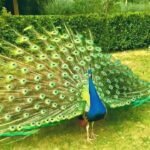Growing your own plants from seed can be among the mostexciting and worthwhile gardening activities. And of courseit is an actually inexpensive way to grow the number of plantsyou requirement for your garden or containers.
In this article I am going to handle growing seeds frompackets bought at a garden centre– as this is theeasiest way to start. These packets will have a picture onthe front and growing instructions on the reverse, includinggermination times and the best time of year to sow. Theinstructions are necessary so do keep the package safe evenif you have actually utilized all the seeds!
- Devices you require:
- Clean pots or seed trays, with drainage holes and not tooflimsy
- Seed garden compost or multi-purpose compost is simply as reliable
- Clear plastic bags or cling movie or propagator
- Vermiculite– can be used to offer the seeds a lightcovering rather of compost
- Dibber or pencil and widger or teaspoon
- Small watering can with fine rose
- Plant labels– white plastic ones are cheap
- Sowing the seed:
- Fill your pots or seed trays with the compost to about 1cm listed below the rim and water the garden compost well
- For little seeds, tip them into the palm of your hand andthen gently tap it with your other hand to sprinkle theseeds thinly on to the compost
- For big seeds, press the seed into the garden compost till itis just covered by its own depth of compost
- Cover the seeds thinly with a little compost– do notcover extremely great seeds
- Seal the pots or trays inside a large loose plastic bag orpropagator, or cover with stick movie
- Place them in a warm, light location– on a windowsill butout of direct sunshine
- Water carefully if the compost begins to dry out
- Germination and pricking out:
When the seeds begin to germinate, the very first thing you willsee growing are the seed leaves– two little round leavesthat look very much the very same on all plants. Then the firstpair of true leaves appear and you can identify that thesetiny leaves are like those on the mature plant. This is thetime to move the seedlings into brand-new pots.
- Fill tidy 9 cms pots or seed trays with fresh garden compost andwater well
- Gently loosen each seedling from its pot/tray with awidger or the handle of a teaspoon, holding the seedling byits seed leaf
- Make a hole in the new compost with a dibber or pencil andgently lower the seedling into the hole, ensuring thatall the roots are tucked into the seed and the hole leavesare simply above the surface
- Carefully fill the hole to cover the roots
- You can space the seedlings in a seed tray about 3-4 cmsapart; otherwise plant them separately into pots
- Water thoroughly, either by soaking the pot or tray, orusing a small watering can with a fine increased
- Place in bright light, however not direct sunshine, and checkregularly
- Keep watered, but not too wet
- Once the roots fill the trays or pots, then it is time toplant them either into your containers in the garden or intothe garden border.
It’s not as made complex as you may believe, but it doesrequire a little thought and care– the equipment needs to beclean to avoid disease or infection; don’t over-water; provide adequate light; deal with carefully; and check regularly.
Which’s all there is to it!
In this post I am going to deal with growing seeds frompackets bought at a garden centre– as this is theeasiest way to start. These packets will have a photo onthe front and growing directions on the reverse, includinggermination times and the finest time of year to plant. Theinstructions are important so do keep the packet safe evenif you have utilized all the seeds!
When the seeds begin to sprout, the first thing you willsee growing are the seed leaves– two little round leavesthat appearance very much the very same on all plants. The firstpair of real leaves appear and you can acknowledge that thesetiny leaves are like those on the fully grown plant.






